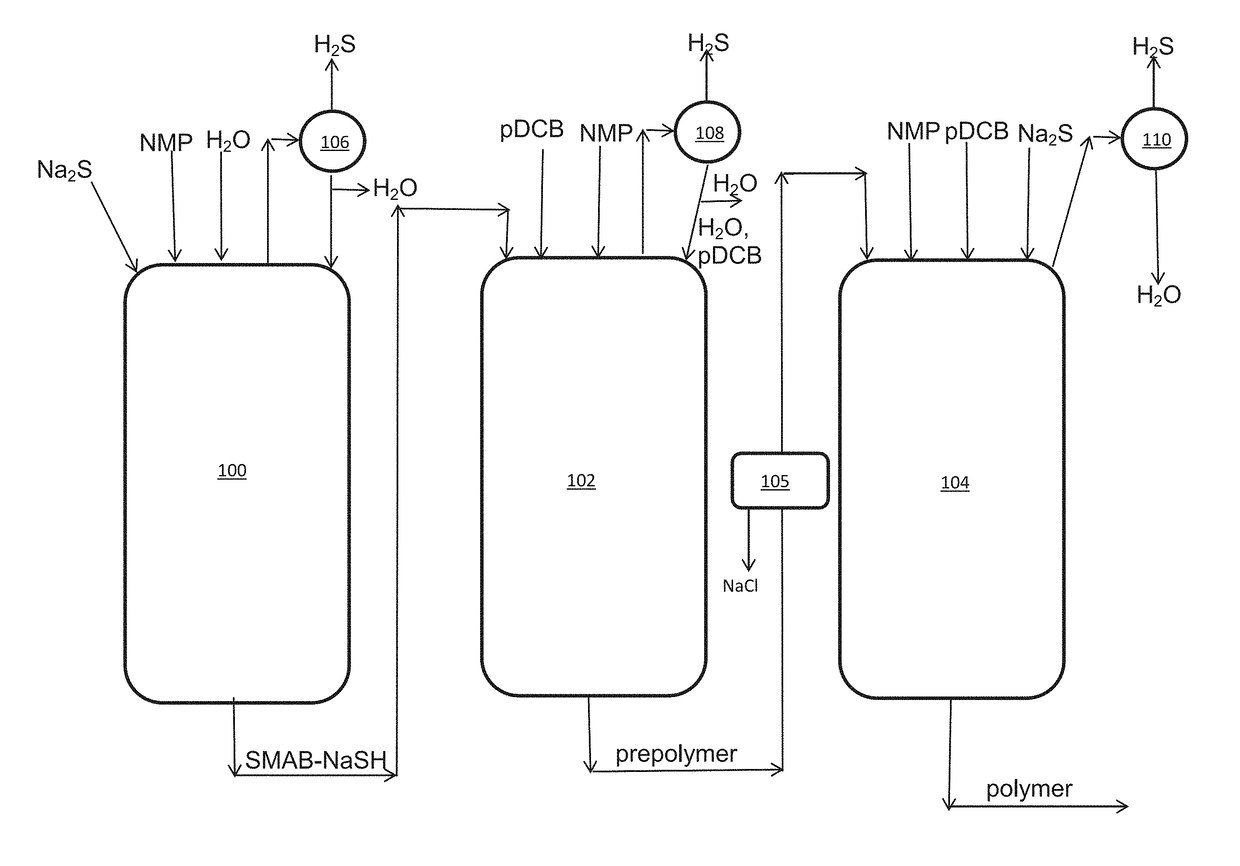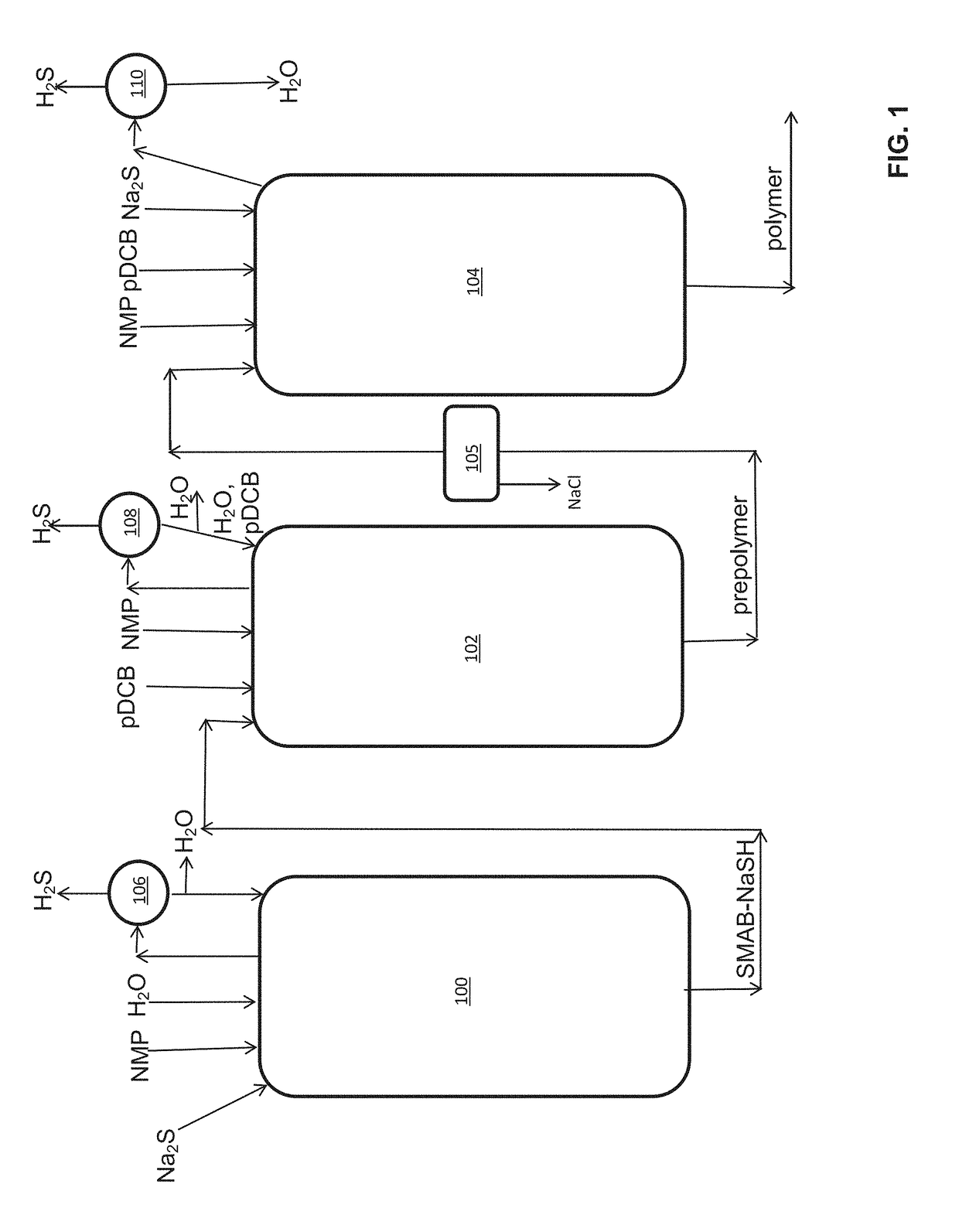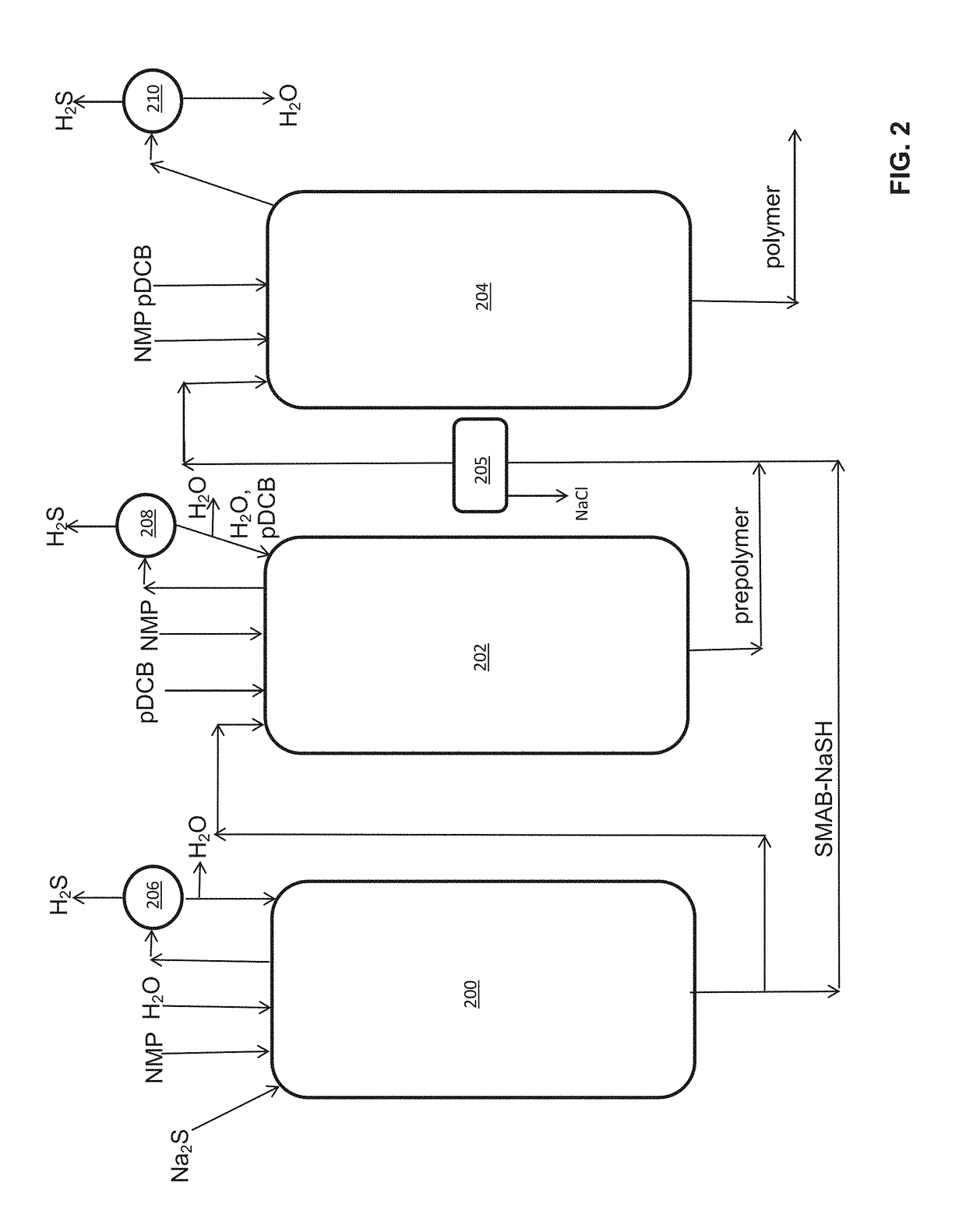Method of polyarylene sulfide precipitation
a technology of polyarylene sulfide and precipitation method, which is applied in the field of polyarylene sulfide precipitation method, can solve the problems of low yield, increased production cost, explosion hazards, and less effective washing of polymer, and achieves good particle integrity, improved washing and purification process, and little fine formation
- Summary
- Abstract
- Description
- Claims
- Application Information
AI Technical Summary
Benefits of technology
Problems solved by technology
Method used
Image
Examples
example 1
[0127]A mixture including polyarylene sulfide (MW 33 kDa), 1.5 wt. % polyarylene sulfide oligomers (5-10 kDa), NaCl (1 mol / mol sulfur), NMP 4 mol / mol sulfur), and water (2.9 mol / mol sulfur) was heated to 265° C. and cooled to 180° C. at 1 C / m in while stirring at 400 rpm. The mixture was washed twice with acetone to product a first product (Run A).
[0128]The procedure was repeated but with the inclusion of NaOH in the solution such that the pH of the final slurry (when 1 part slurry is diluted with 5 parts DI water and pH measured) had a pH between 8 and 12 (Run B). In a final slurry (when 1 part slurry is diluted with 5 parts DI water and pH measured) (Run C), acetic acid was added such that the pH was between 3 and 6.
[0129]FIG. 3A, FIG. 3B, and FIG. 3C provide images of increasing magnification of the precipitated particles. The porosity of the particles when precipitated from an acidic mixture was found to be comparable to that when precipitated from a basic mixture. In both cases...
example 2
[0130]A mixture of polyarylene sulfide (MW 33 kDa), 1.5 wt. % oligomers (5-10 kDa), NaCl (1 mol / mol sulfur), NMP (4 mol / mol sulfur), and water (2.2 to 2.9 mol / mole sulfur) was heated to 265° C. and cooled down to 180° C. (from 0.5 to 1.5 C / m in) with rpm (300 to 500). The reactor mixture was washed with twice with acetone. Basic pH (8-12 when 1 part slurry is diluted with 4 parts DI water and pH measured).
[0131]Results are provided in the table below.
[0132]
MixingCoolingspeedH2O:SRateDensityRun(RPM)(mol:mol)(° C. / min)d50d95(g / ml)commercial———9053710.50015002.90.517515080.66425002.91.522345410.65735002.20.510602500.56245002.21.517803630.57253002.90.510971800.64663002.91.524801830.65473002.20.55521190.58283002.21.58591410.60594002.51.012861810.63510 4002.51.013182180.621
[0133]The particle size distribution was found to be affected by factors such as mixing speed, H2O:S ratio, and cooling rate.
example 3
[0134]A mixture of polyarylene sulfide (MW 33 kDa), 1.5 wt. % oligomers (5-10 kDa), NaCl (1 mol / mol sulfur), NMP (4 mol / mol sulfur), and water (2.2 to 2.9 mol / mole sulfur) was heated to 265° C. The reactor mixture was washed with twice with acetone. Basic pH (8-12 when 1 part slurry is diluted with 4 parts DI water and pH measured).
[0135]A single step cooling process and three different three-step cooling processes were carried out. FIG. 4 presents images of representative particles. The particle of FIG. 4A, was formed according to the disclosed methods and was found to be hard and porous. The particle of FIG. 4B was formed in a single-step cooling process and was porous and crumbly, and the particle of FIG. 4C is a commercially available product, which was found to be hard, but less porous. Additional results are provided in the table below.
PUM
| Property | Measurement | Unit |
|---|---|---|
| temperature | aaaaa | aaaaa |
| temperature | aaaaa | aaaaa |
| molecular weight | aaaaa | aaaaa |
Abstract
Description
Claims
Application Information
 Login to View More
Login to View More - R&D
- Intellectual Property
- Life Sciences
- Materials
- Tech Scout
- Unparalleled Data Quality
- Higher Quality Content
- 60% Fewer Hallucinations
Browse by: Latest US Patents, China's latest patents, Technical Efficacy Thesaurus, Application Domain, Technology Topic, Popular Technical Reports.
© 2025 PatSnap. All rights reserved.Legal|Privacy policy|Modern Slavery Act Transparency Statement|Sitemap|About US| Contact US: help@patsnap.com



